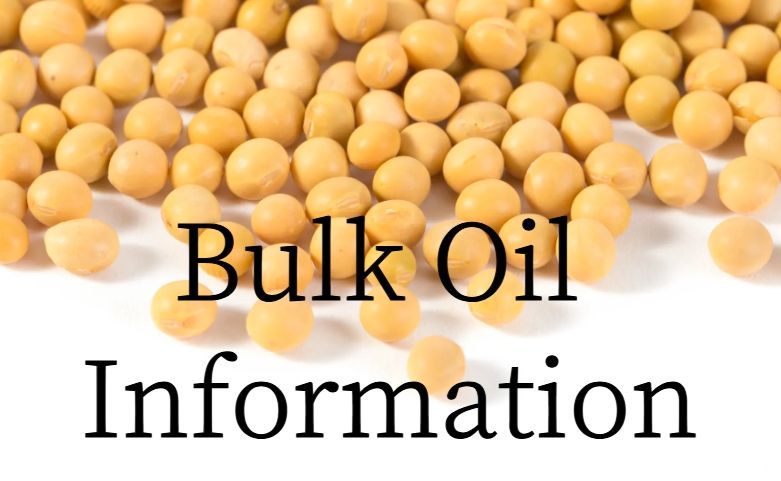Author: CHOCOMACH
April 16, 2025
11211
145% tariff game intensifies, oil market fluctuates and differentiates: soybean oil basis soars, palm oil falls Recently, the global agricultural product market has fluctuated violently due to the sharp escalation of the Sino-US tariff conflict. The expansion of the tariff list by 145% has become a historical high, becoming the focus of international economic and trade this week. Under the impact of policies, the domestic oil futures and spot markets have emerged from the "V-shaped" roller coaster market, and regional supply and demand mismatches and capital games have exacerbated market complexity.

▶Soybean oil: Regional price differences widen, basis hits a new high this year At noon on April 11. the average spot price of domestic first-grade soybean oil was 8030 RMB/ton, and the quotations of the seven major coastal hub ports showed a stepped distribution: Dalian Port in the north was 7840 RMB/ton, Tianjin Port in the Bohai Sea was 7990 RMB/ton; Qingdao Port in East China was 7970 RMB/ton, Zhangjiagang was 8090 RMB/ton; Dongguan Port in South China was 8070 RMB/ton, and Fangchenggang was 8090 RMB/ton. The north-south price difference is as high as 250 RMB/ton, which is mainly constrained by inland transportation bottlenecks and inventory forward strategies. Chicago Board of Trade (CBOT) soybean futures rebounded 6.7% from the low and successfully recovered the 900 cents/bushel mark. The market focus turned to the weather model and planting intention survey of the Midwestern planting belt in the United States. According to data from AgRural, a Brazilian agricultural consulting company, the country's soybean harvest was 81% complete, 5 percentage points ahead of the same period last year, and the South American supply wave formed a run effect on US soybean exports.
▶Palm oil: Inventory turning point appears, biodiesel demand is suppressed Malaysia Derivatives Exchange (BMD) palm oil futures closed negative for the third consecutive week, and the main contract approached the 700 ringgit/ton mark. The MPOB monthly report showed that Malaysian palm oil stocks increased by 3.52%-1.56 million tons month-on-month at the end of March, ending the five-month destocking process. Crude oil futures fell below $80/barrel, which worsened the economics of palm oil biodiesel blending and delayed Indonesia's B40 promotion plan. According to data from shipping survey agency AmSpec, Malaysian palm oil exports in early April decreased by 18% year-on-year, and major buyer India cut its purchases due to inverted import profits. Analysis agency Palmoil Research predicts that Southeast Asian palm oil production will increase by 12% year-on-year in the second quarter, and the inventory reconstruction cycle may continue for the third quarter. Basis system reconstructed, soybean oil led the rise, and palm oil returned to rationality.
▶ The domestic oil and fat basis system has undergone structural reconstruction under the impact of policies: Soybean oil basis: The basis in the northeastern production area soared to 05 contracts + 230 RMB due to logistics bottlenecks, the North China region rose by + 260 RMB, the East China region broke through + 450 RMB, and the South China region reached a high of + 500 RMB. Some oil mills suspended pick-up due to bulging warehouses, and traders generally queued for goods. Palm oil basis: The 24-degree palm oil basis in North China stabilized at 05+700 RMB, East China returned to 05+480 RMB, and South China reported 05+450 RMB. Under the market's rigid demand, the basis fluctuation range narrowed to within 30 RMB. Rapeseed oil basis: Sichuan and Chongqing rapeseed oil basis rose to 05+400 RMB, East China reported 05+120 RMB, and Guangxi spot basis remained at 05+40 RMB. Downstream spot prices were active in picking up goods, and the long-term basis remained strong due to the closure of the rapeseed purchase window.
▶ Outlook for the future: Expectations of loose supply and geopolitical risk game As the Sino-US tariff negotiations entered a critical window period, the market's sensitivity to trade frictions gradually dulled. Domestic soybean port volume in May is expected to increase by 37% to 9.5 million tons month-on-month, and the utilization rate of oil mill crushing capacity is expected to rebound to 1.8 million tons/week, and the tight supply of soybean oil will be alleviated. Analysis agency Oil World pointed out that the current soybean-palm oil price difference remains at a high level of 1.200 RMB/ton, and the cost-effectiveness advantage of palm oil is difficult to recover. Although the rise in temperature is conducive to the seasonal recovery of catering consumption, palm oil will still be mainly purchased for rigid demand during the inventory reconstruction cycle. The rapeseed oil market needs to pay close attention to the temporary storage auction policy in late May. If the scale of dumping is less than expected, the forward basis is expected to maintain a premium structure. At the same time, the renewal negotiations of the Black Sea Grain Corridor Agreement and the geopolitical situation in the Middle East will become potential risk points in the oil and fat market.
▶On the whole, the oil and fat market will gradually return to the fundamentals from policy-driven, and the regional supply and demand differences and the price ratio between varieties will become the core of the next stage of trading. It is recommended that traders pay attention to the changes in the operating rate of oil mills and the Southeast Asian palm oil export loading data in mid-May, and seize the opportunity of basis return trading.

Service Tel:
+86 136 0865 6963
+86 199 3799 5959
0086 0379-61127277

Email:
chocooilpress@gmail.com info@chocomach.com

Wechat:


WhatsApp:
+86 199 3799 5959